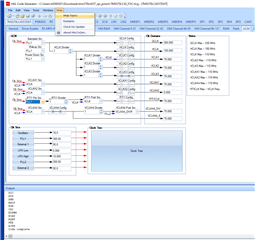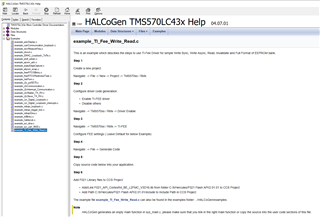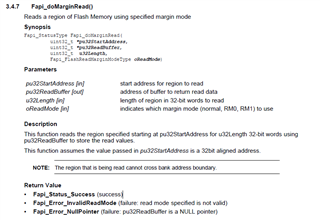Other Parts Discussed in Thread: HALCOGEN
Hi,
I am writing a code and I am trying to read the contents of some Flash memory regions. Before trying anything I am searching for information and I have found information for programming and erasing flash memory regions but for reading operations, the information is scarcer.
On one hand I have found Flash API functions like Fapi_doMarginRead() and Fapi_doMarginReadByByte() which seems what I should use. Previous to that it is stated that Fapi_initializeFlashBanks() should be called. And that is more or less everyting because no FSM is shown for the reading operation in the reference guide or at least I haven't found it (though I guess I should use something similiar to the erase/programming FSM).
On the other hand, the TI_FEE source code already has some read operations like TI_Fee_ReadSync and TI_Fee_Read which just do some checkings, and the TI_Fee_MainFunction() which is the one efectively making the read operation without using the FAPI functions:

So basically my doubts are in the line of which option to use:
- Copy FEE code and use it for other banks
- Use the FAPI library in which case I don't know exactly which program flow I should follow.
Thanks in advance and kind regards.






